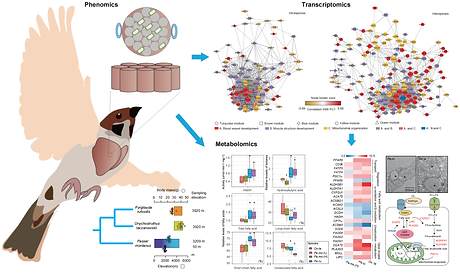Ying Xiong
My Research
Physiological genomes
I completed my DPhil research for bird adaptation to high-altitude hypoxia through integrating genomics and functional experiments on the whole organisms. This research revealed the convergent physiological and genetic mechanisms on hypoxia resistance in high-altitude songbirds.

Functional evolution of gene duplicates
Avian genomes are small and lack some genes that are conserved in the genomes of most other vertebrates including nonavian sauropsids. A large-scale phylogenetic analysis of over 1,400 SLC2 gene sequences identififies six new SLC2 genes from non-mammalian vertebrates and divides the SLC2 gene family into four classes. Birds appear to have completely lost the SLC2A4 gene that encodes an important insulin-sensitive GLUT in mammals. We found strong evidence for positive selection, indicating that the N-termini of SLC2A4 and SLC2A12 have undergone diversifying selection in birds and mammals, and there is a signifificant correlation between SLC2A12 functionality and basal metabolic rates in endotherms.

Phenotypic evolution
Pectoralis phenotypic variation plays a fundamental role in locomotion and thermogenesis in highland birds. However, its regulatory and metabolic mechanisms remain enigmatic to date.
Here, we integrated phenomic, transcriptomic and metabolomic approaches to determine muscle variation and its underpinning mechanisms across altitudinal songbirds. Phenomics conformed that all highland birds had considerable increases in muscle oxidative capacity, capillarity, and mitochondrial abundance in our study.
